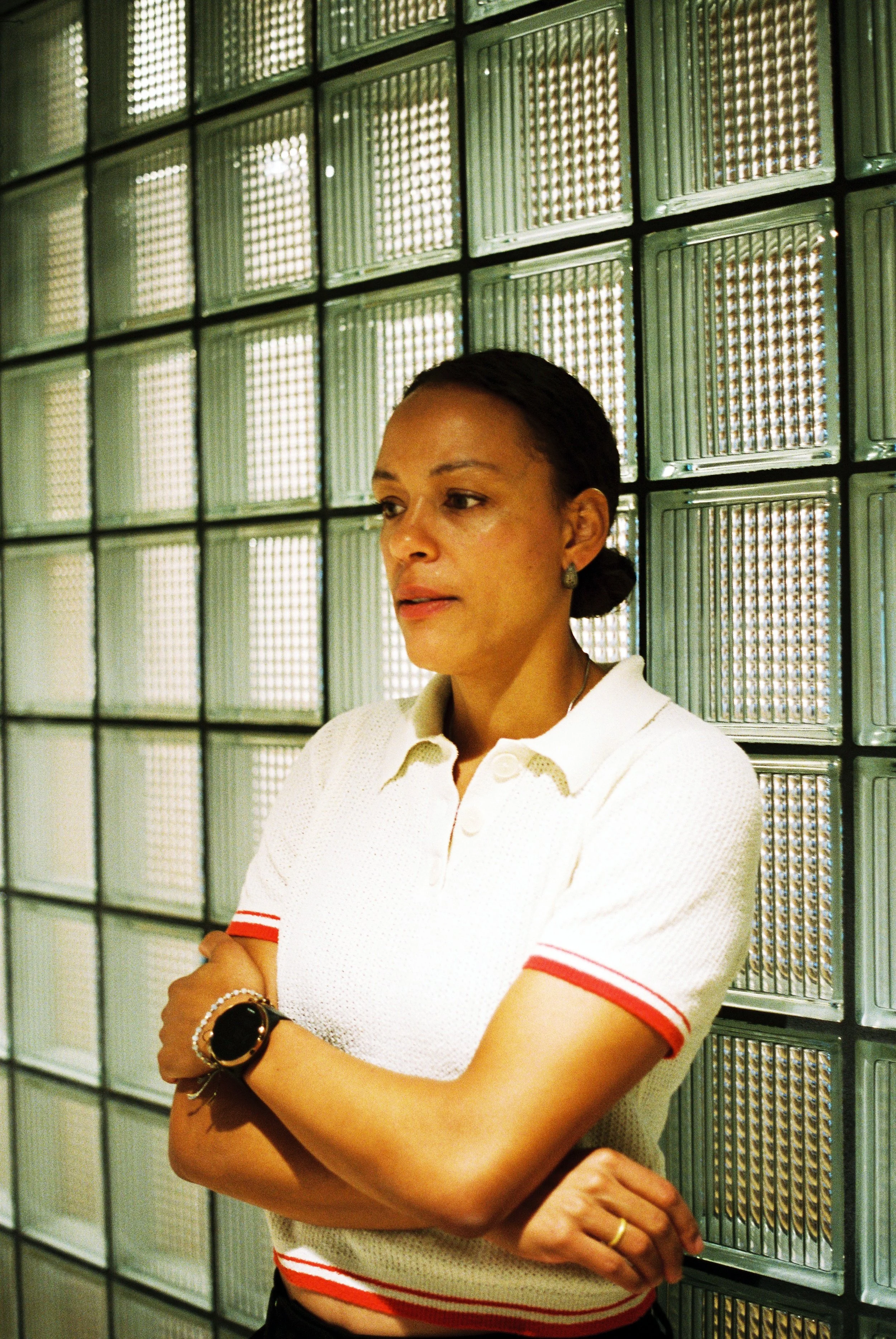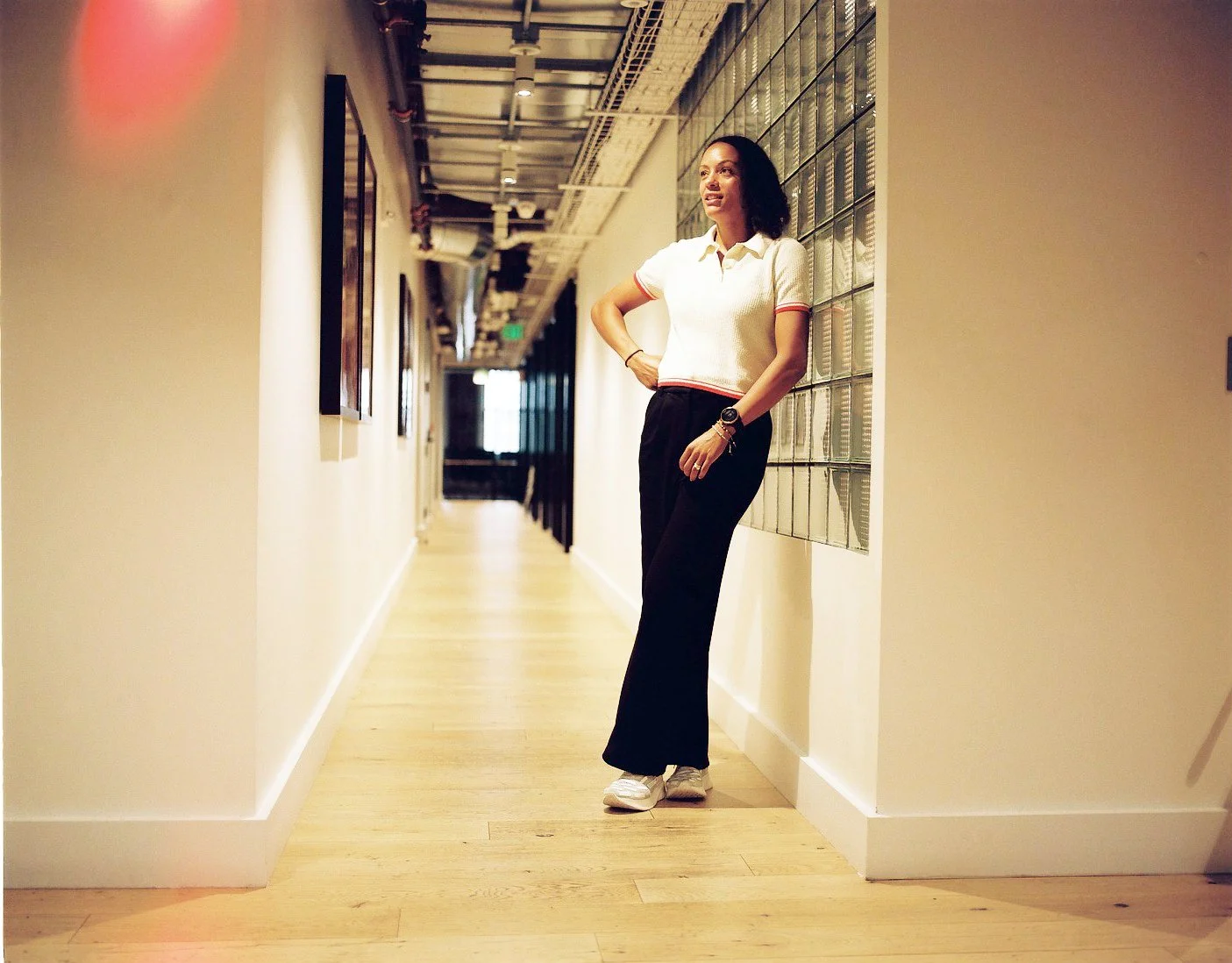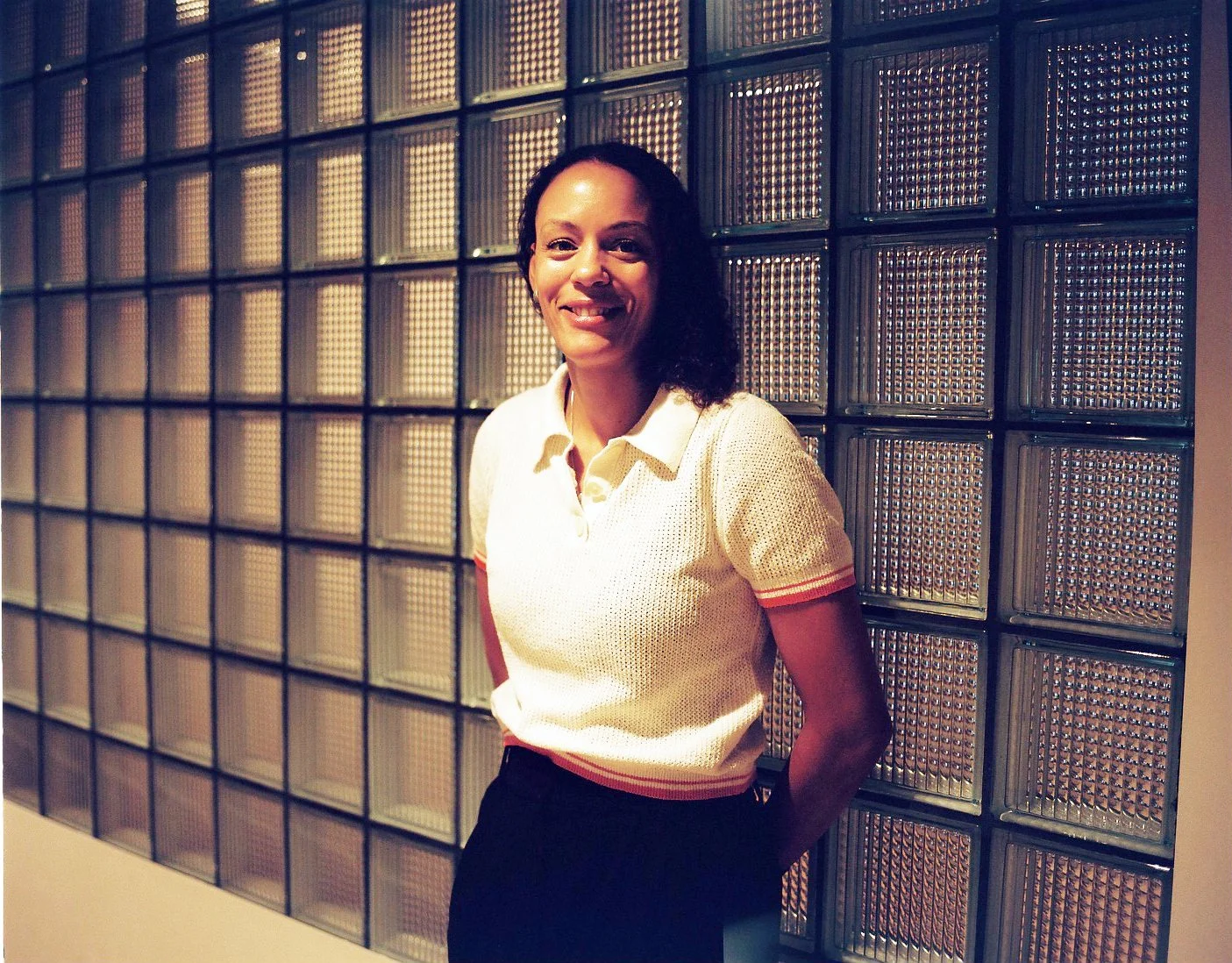Vitelle | Roma Van der Walt
Roma van der Walt grew up in Germany, competed professionally in modern pentathlon and worked at the United Nations for the better part of a decade before going all in on building infrastructure to make health and performance systems account for female physiology. We sat down to speak about the experiences that shaped her—from being a Third Culture Kid, to the processing of grief, and the triumph of motherhood—and how they collectively laid the foundation for her startup, Vitelle.
Tell us about your childhood.
I’m the child of two immigrants—my dad from Kenya, my mom from Poland. They met in Poland when he went there to study for a master’s. At the time it was common for South American and African students to go to Eastern Europe—get the degree and, ideally, the ideology, and then go back. My dad didn’t go back. He got a PhD scholarship in Germany; my mom followed him. I was born in Germany about six months after they arrived.
They didn’t speak German when they got there. They learned quickly—my mom studied languages, my dad was an Anthropologist. I grew up in German, Polish, and English. And we walked everywhere. My dad didn’t believe in public transport and didn’t have a driver’s license, so we walked. Which I think probably contributed to why my VO₂ max and resting heart rate are so exceptional.
By five or six I was tumbling, doing track and field, horseback riding. Swimming is compulsory in Germany. Without knowing it I was building the foundation of three sports.
At nine I found fencing and absolutely fell in love. My parents leaned more academic than sport, so the deal for high school was: bring home straight A’s, then you can add fencing. At twelve I met a coach who said, “You’re already doing four of the five sports I’d like you to consider—let’s add shooting.” That’s how I became a modern pentathlete.
For people who aren’t familiar—what is modern pentathlon?
Pierre de Coubertin, father of the modern Olympics, created it. He wanted one sport that represented the perfect man—the perfect soldier in the early 20th century: ride a horse across enemy lines, defend yourself with sword and pistol, run and swim to deliver a message. So it’s riding, fencing, shooting, running, swimming. Men competed from the first Games; for women it became Olympic in 2000.
Were your parents athletes?
My dad was not—people assume because he’s Kenyan that he was a runner; he wasn’t. My mom was athletic but not beyond school.
Walk me into your competitive years.
I’m one of the subset of people who were at that level but didn’t make it to the Olympics. You’re training at the same level, competing at the world level, but you didn’t unlock that basket.
At fourteen or fifteen I tried out for the national team. I had a stellar performance all around except riding. In pentathlon it’s not your horse. The organizer provides the horses. You get about fifteen minutes. My horse refused every obstacle. That ended my chances that year.
I tried again the next year. In February my father died suddenly. His tuberculosis had been dormant; it flared and killed him. In May I made the team. I put everything into qualification for ten months. I was still in school, training thirty hours a week. My grief was delayed. The next two and a half years—when it mattered for the 2000 Games—I turned the grief against myself and against my body. Disordered eating, struggling emotionally and mentally. I could still perform up to a point, which masked it, until I couldn’t. I wasn’t in a physical or mental position to make the Games.
What did healing look like?
Space. I’m the oldest of four girls; there was a lot on at home. I moved in with my godparents and got to be an only child for a bit—what a blessing. Therapy helped. During those years sport wasn’t the healthiest coping mechanism. Only after my career did I learn how to make it a healing force. The resilience stayed: get beaten down, get back up.
How do we get from there to Vitelle?
University, then an internship at the United Nations in New York. Three months turned into fifteen years. New York was the ultimate freedom. I left during the pandemic. My husband is Australian; we moved to Australia. Immigration is very strict there—I wasn’t allowed to work. I had a second child and started ideating: given everything I’ve lived—athlete, immigrant, grief, motherhood—what is the ideal purpose around which I could build a company?
It was always women’s health and women’s performance—and that the two are inextricably linked. Vitelle is a health intelligence infrastructure to finally connect all the dots across systems that excluded female physiology.
Make that concrete.
High performance systems were built around the structures that had money—male sports. Male bodies are more straightforward for those systems: train and recover. Women’s bodies are more nuanced: a 24-hour hormonal cycle for men versus a month-long cycle for women; different injury risk, recovery needs. You need more interventions and more feedback loops to prime female athletes.
On the health side, women were excluded from clinical research until 1997. We have limited data on how to treat women adequately, how women age, why women are more susceptible to diseases like Alzheimer’s. Even large language models—if you say you’ve trained an LLM for women’s health, show me the data you trained it on. Women and female bodies deserve better.
And the business side of things?
A data analyst told me in football—soccer—the goal is the same size for men and women. A man can reach both upper corners; women come about 25% short. If you made the goal smaller, you might make a more interesting game because the keeper actually has a chance. But if women are trained better—and they are being trained—and hardware evolves, do they overcome the 25%? Maybe you don’t need to change it. The point is to design for the actual athlete.
And think about the WNBA—highest rate of injuries in the existence of the league. That’s costing franchises money. If fan engagement and streaming rights are driving franchise value, when do we accept that the biggest asset is athlete health—and health dictates performance?
Coordination seems like a missing link.
I was lucky. I had one coach who was all-in, and I brought everyone I needed to the table: massages three times a week, weekly physio—prehab or fixing something—orthopedics at a moment’s notice. Pro athletes have access, but how well is it coordinated? Fragmentation is the problem.
Where did Vitelle start product-wise?
We integrate and contextualize data—wearables, lab results, biomarkers, a few other inputs—to produce actionable, personalized care. We’re agnostic: Whoop, Oura, Garmin, Polar, Suunto—bring what you use. We’re also lab-agnostic. We visualize for the end user and for the provider.
We pivoted hard from consumer to B2B about a year ago. The noise for women’s attention is loud. Women don’t need more mental load. A lot of apps are LLM journals that “arm you for your appointment with your doctor.” Going in armed never bodes well in my experience. So we go to providers first: give them the context of what’s happening before an appointment—or help them avoid an unnecessary appointment.
Diagnostics are similar. You take a test, see a score, a value out of range, and the message is “go talk to your provider.” Instead, if your cortisol is high, you can do something. If your HbA1c is high, you can do something. We step in between tests with protocols and real-time adjustments so you make progress—and then the second test shows it. That increases retention for diagnostics companies and gives a success metric.
Where are you focusing now?
Concierge and boutique doctors, digital health companies, high-performance organizations, diagnostics partners. Concierge practices often charge around $5,000 a year—some longevity clinics are $50,000. A practice might cap at ~400 patients because of promised access—text and phone. Without context, triaging “my head hurts and my shoulder hurts” takes time. With our technology, you put that in context in one click. Operationally you free up time and can safely increase patient caps—450, 500. Our model right now is billed by patient per month, with volume pricing for larger orgs. For big health systems, we’ll approach later.
Long-term vision?
To be the foremost prevention platform for women—integral to every health system. A plug-in to MyChart or Epic. Those are transactional—storage, messages. What’s missing is proactive: this person may need an HRT adjustment; this person changed supplements—what does it mean? If millions of women are supported that way, the data flywheel can flow back into research—how we test, prescribe, develop drugs for women; what researchers can unearth in ovarian aging and health. We’re already seeing signals in small datasets; seeing them at scale changes the science.
Where do wearables fit for you personally?
I’ve owned all of them. I grew up wearing Polar. I’ve gone through Suunto, Garmin. I’ve used Whoop and Oura. I love the data. But we’ll never entirely understand what goes into proprietary scores. I like my ring for sleeping, but I don’t like it for lifting—so I don’t wear it in the gym and lose data. I like Whoop for exercising, and I wore it for sleep, but I don’t personally treat HRV as the biggest metric. I’m still waiting for the step of what does this metric mean in context and what am I supposed to do with it in my life? That’s what we unlock.
Any proprietary hardware?
No. Being agnostic is the point. We integrate existing hardware and labs. We do run proprietary protocols across lifestyle pillars. If everything is within range, the protocol goes forward. If something changes, we adjust—versus getting a PDF that says, “do this for three months,” no matter what.
How do your own experiences shape how you build?
I’m a third-culture kid. I’m comfortable bridging cultures and systems. Having lived in Australia, I can speak fluently with performance specialists Asia Pacific. From sport, I know long cycles—you might miss one Olympic cycle and still need the courage to aim for the next. As a female founder in women’s health and performance, that matters.
Only 2% of venture funding goes to women; 0.1% to Black women. I recently learned the BAME acronym—Black, Asian, Minority Ethnic—I tick three out of the four. People told me there wasn’t a market for female longevity—that it was just menopause. People didn’t get “health intelligence”; everything was siloed. Now context is recognized as valuable.
Data is the heartbeat from sport—wearables, load, prehab vs. rehab. In sports, prevention and lifestyle are inside the game. In healthcare, they’ve been separate. Vitelle is about closing that gap.
If Vitelle wins, how does healthcare change?
Care becomes proactive. The woman’s app is simple; the provider’s view is rich. A clinician can see enough to titrate a prescription or tweak recovery between visits. On the population level, real-world, gender-specific evidence at scale can finally inform trials, guidelines, and drug development. From adolescent development to ovarian health to neurodegeneration, we’ll be able to see patterns we’ve never captured in real time.
Before we close—motherhood.
Becoming a mother—pregnancy and postpartum—was the most impressive thing my body has ever done. Wondrous physiologically, and athletically. The build-up to birth is a physical experience. There’s a postpartum phase where, if you were active during pregnancy, you can feel superhuman—lighter, still with more oxygen in your blood because you had more blood volume. We see Olympic athletes become mothers and six to twelve months later have breakout performances. I always wondered why; then I lived it.
After my son I ran a half-marathon nine weeks later and felt okay; an ultramarathon a year later and did really well. With my daughter I ran an ultramarathon four months postpartum—and I killed it. If you’ve been through childbirth, mentally, very little athletically will break you after that.
Roma van der Walt is the founder of Vitelle, a health-intelligence company focused on improving care for women. Her work challenges notions of unpredictability surrounding women’s bodies, reframing them as powerful systems on the brink of being understood.
Conversation transcribed and condensed by Chessin Gertler | Photography by Chessin Gertler





